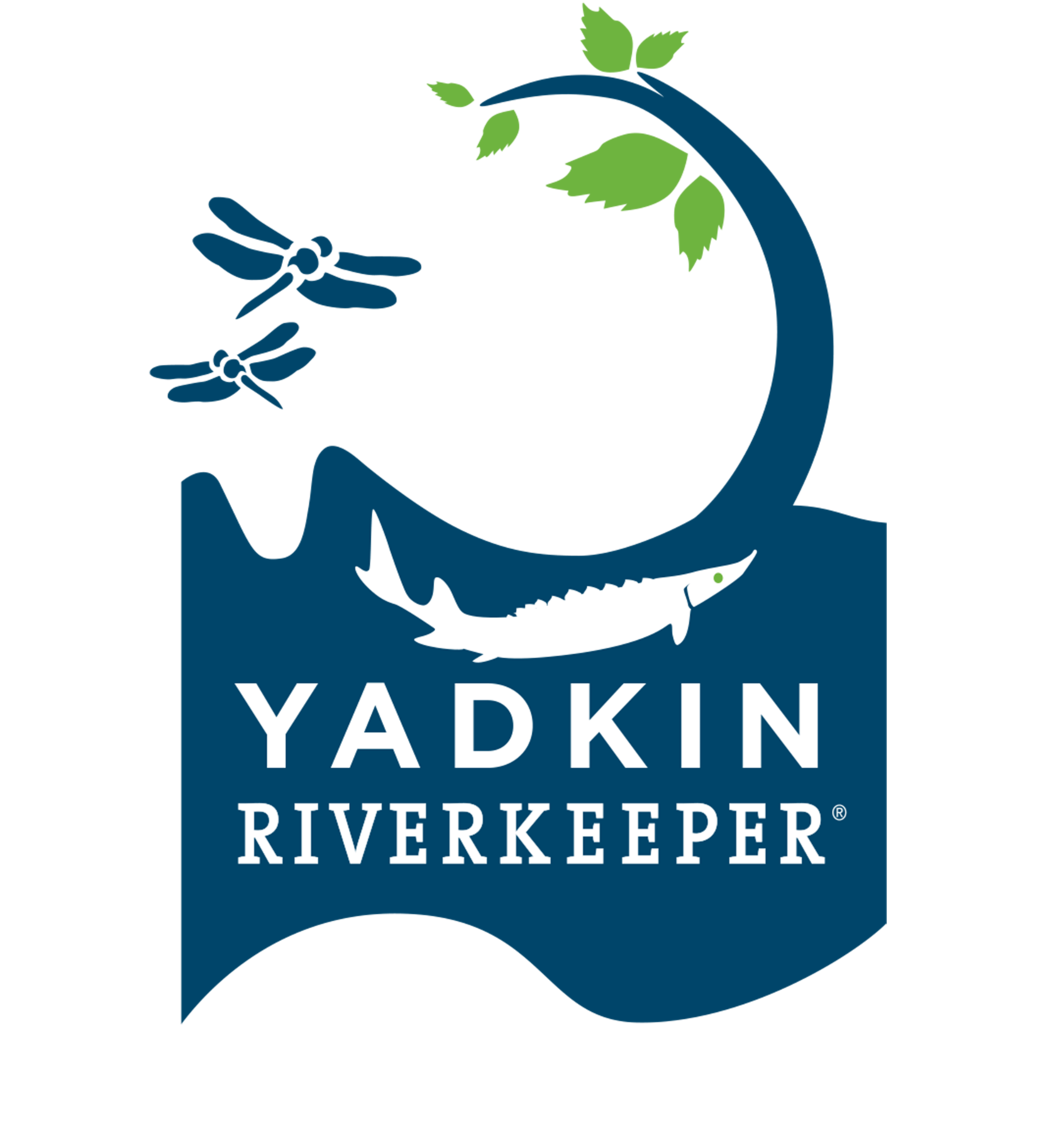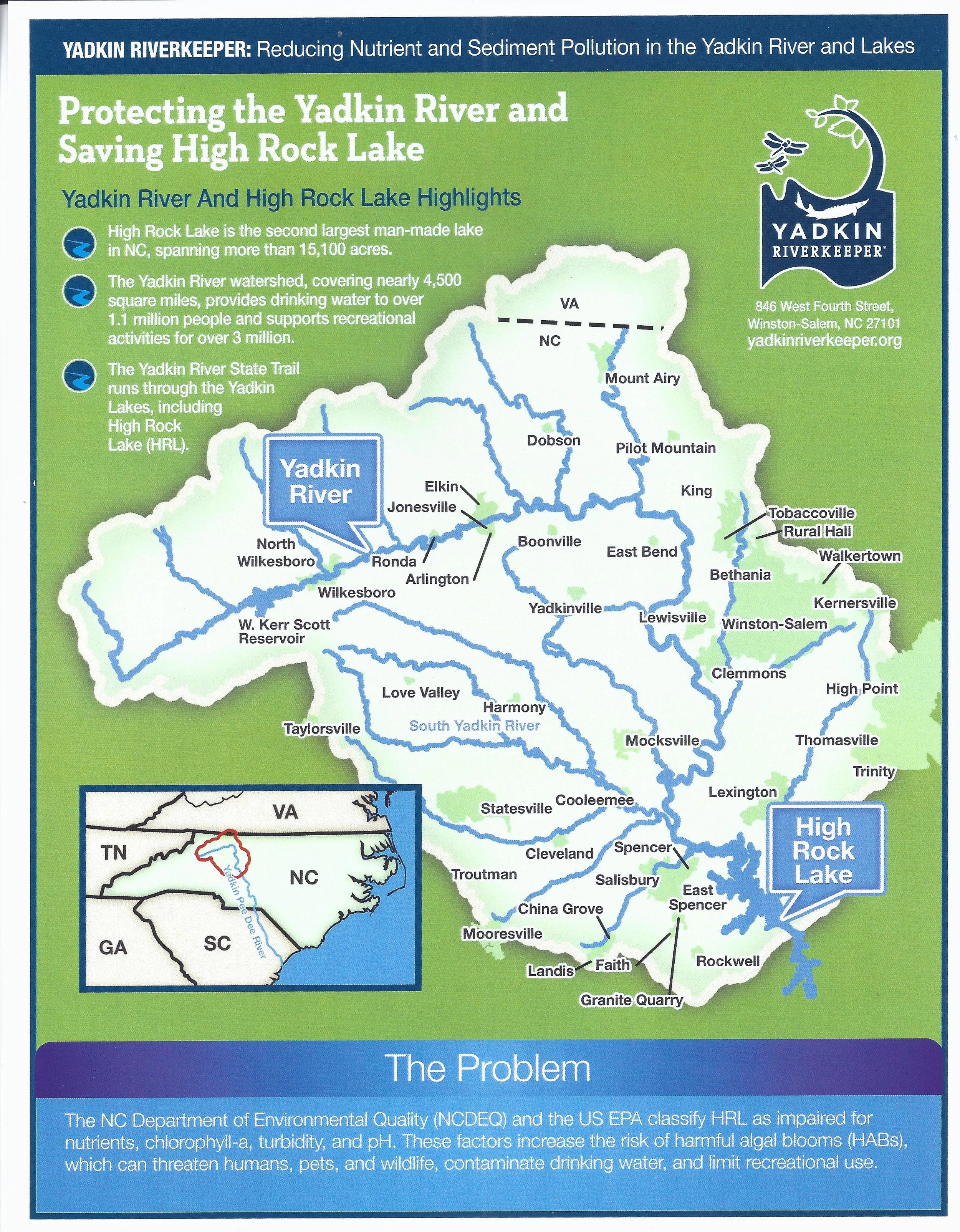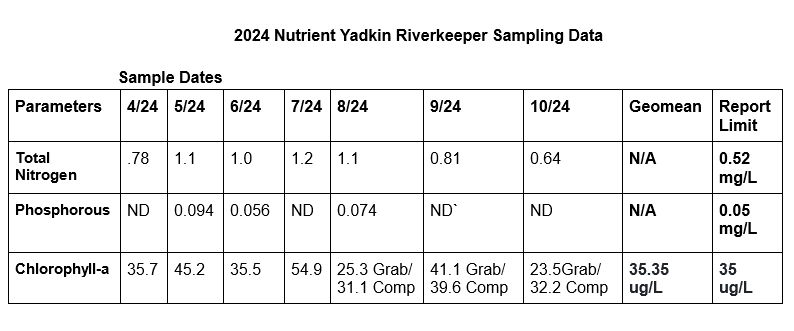-Stephanie Stephens, Water Quality Specialist
At the end of October, the Yadkin Riverkeeper (YRK) team completed the final nutrient sampling and analysis on High Rock Lake (HRL) for the 2024 algae growing season, which spans from April-October. Over the past seven years, Yadkin Riverkeeper has conducted nutrient and bacteria sampling to determine the health of HRL in various regions of the upper lake, middle channel and lower lake. Over the last three years, YRK sampling has been focused on NC Department of Environmental Quality’s (NCEQ) site YAD152C, located in the middle channel of HRL near the mouth of Crane Creek. NCDEQ has identified this site as the point of compliance for the HRL chlorophyll-a standard.
Several studies and lake management assessments have been conducted on HRL over the last decade by NC Division of Water Resources (NCDWR), Wake Forest University and Yadkin Riverkeeper to assess the lake’s overall water quality. In addition to sampling for nutrients, bacteria and turbidity, YRK has sampled for chlorophyll-a levels, which are an indicator of excessive nutrients and the potential for harmful algal blooms or HABs. NCDEQ set a new site-specific standard for HRL at 35 ug/L, compared to the statewide standard of 40 ug/L, due to its impairment for chlorophyll-a. The state has determined that impairment is being caused by excessive phosphorus and nitrogen entering upstream of the lake from the Yadkin and South Yadkin Rivers.
In 2024, Yadkin Riverkeeper found chlorophyll-a levels at slightly higher than 35 ug/L, throughout the height of the growing season, in both grab and composite samples. The 2024 growing season geomean falls slightly above the 35 ug/l standard at 35.35 ug/L, down slightly from 2023, which was at 36.23 ug/L. Although chlorophyll-a levels appear to be slightly lower, the site of compliance is much deeper than arms of the lake, where shallow water, land use and feeding tributaries make a different impact. Excessive nutrients and high chlorophyll-a levels in spring, summer and fall, when the temperatures are high, have led to harmful algal blooms (HABS) in HRL as well as Tuckertown Reservoir and Badin Lake, which may harm humans, pets and wildlife.
According to the approved 2022 Yadkin Pee Dee River Basin Wide Water Resource Management Plan, “since NC does not have instream nutrient criteria in place at this time, the U.S. EPA (2000) suggested Piedmont regional concentrations of 0.62 mg/L total nitrogen (TN) and 0.03 mg/L total phosphorus (TP), is used for comparison purposes only (U.S. EPA, 2000; Nutrient Ecoregion IX, Level III Ecoregion #45). In 2024 at site YAD152C, YRK found levels of both TN and TP above these EPA recommended levels.
Yadkin Riverkeeper has been advocating for the High Rock Lake Nutrient Management Strategy (High Rock Lake Rules), a set of new rules that would apply to all entities contributing nitrogen and phosphorus pollution to the Yadkin and South Yadkin rivers and lake systems., Yadkin Riverkeeper is working with state and local officials, agricultural organizations,developers and other stakeholders to develop consensus recommendations on what should be in the HRL Rules , to cost effectively reduce nutrient pollution sources in an equitable fashion from municipal wastewater, urban stormwater and and agricultural runoff in the High Rock Lake watershed. To learn more about this effort, how nutrient levels and chlorophyll-a are impacting our water quality and what you can do to help, please click on the link below.



